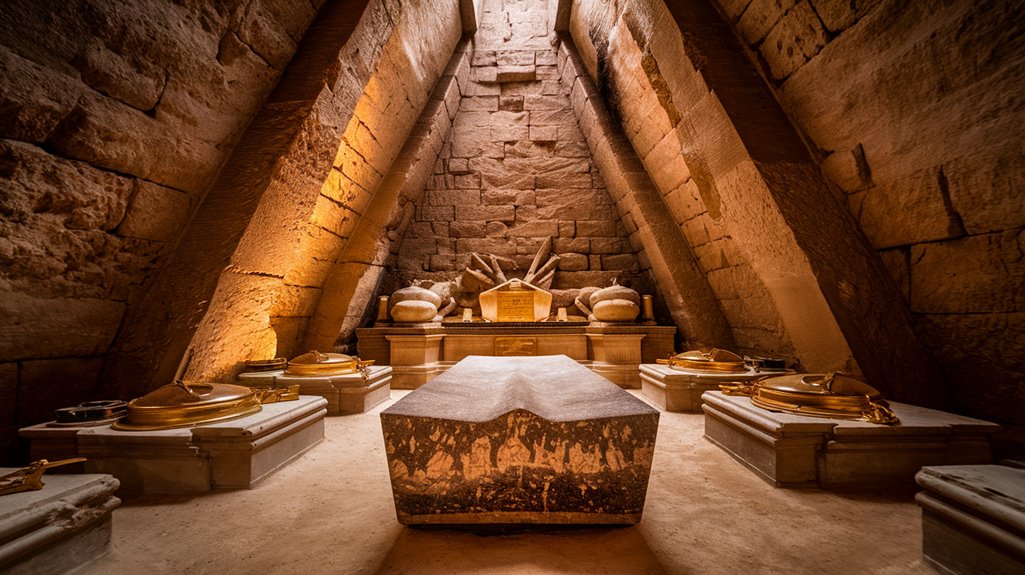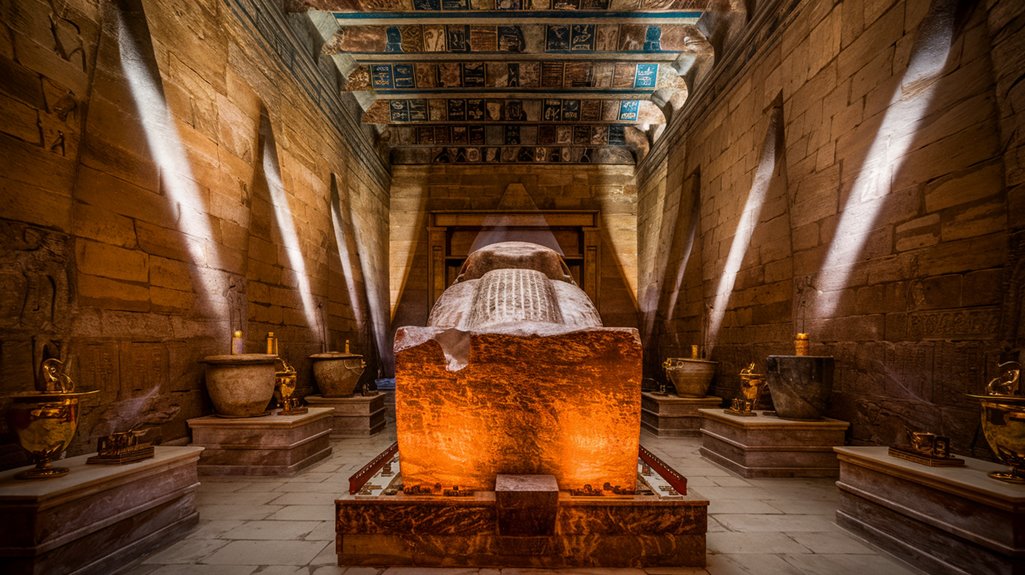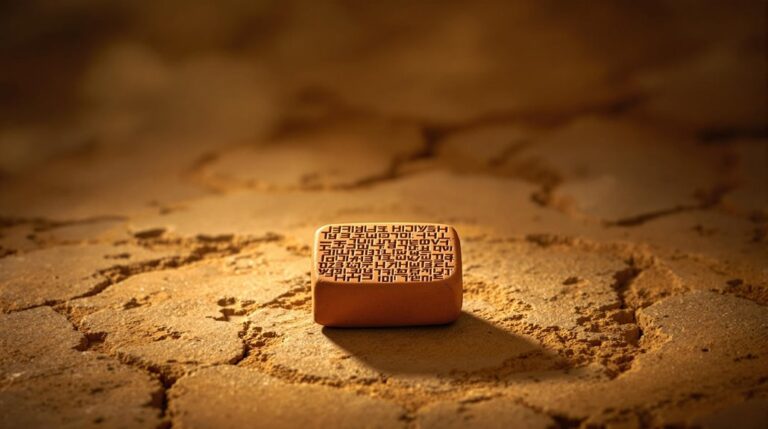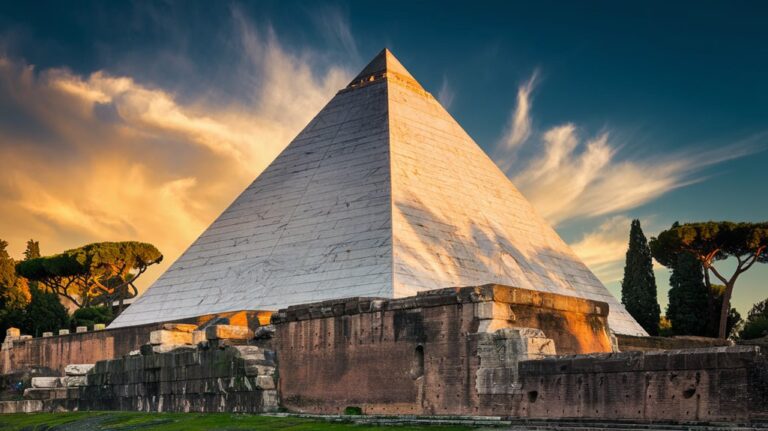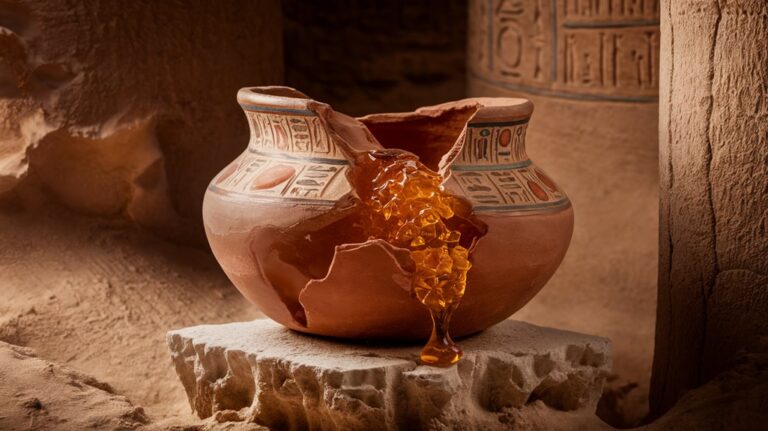Buried Mysteries: What’s Really Inside the Egyptian Pyramids?
You've probably heard stories about the Egyptian pyramids, but there's far more beneath those massive stone surfaces than meets the eye. Beyond the familiar triangular silhouettes, scientists are uncovering new passages and chambers that challenge our understanding of these ancient structures. From a recently discovered 30-foot corridor to mysterious air shafts that reach toward the stars, the pyramids continue to guard secrets that'll reshape how you think about human innovation and ancient engineering.
The Ancient Blueprint: Mapping the Internal Chambers
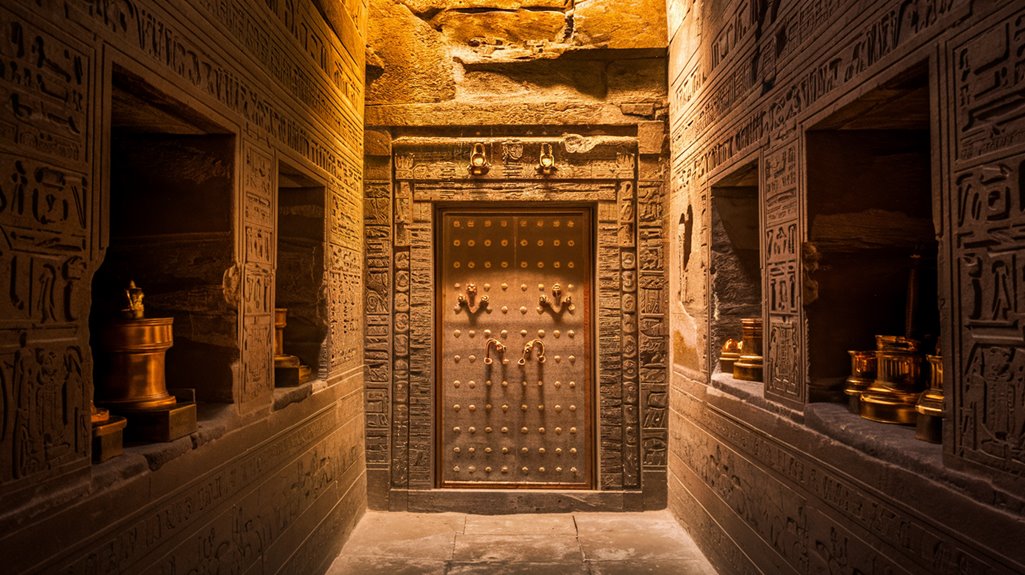
While the Egyptian pyramids have fascinated humanity for millennia, modern technology has finally allowed us to peek inside their mysterious chambers without disturbing a single stone.
You'll find that scientists are now using cosmic-ray muon radiography and infrared thermography to map the pyramids' internal structures with unprecedented precision.
These cutting-edge tools reveal how ancient techniques were masterfully employed to create an architectural marvel.
As you explore deeper, you'll discover that the builders' cosmic insights influenced their placement of chambers, reflecting their understanding of astronomy and religious beliefs.
Through high-energy physics scans and muon tomography, you can now witness the sophisticated engineering that went into weight distribution and support systems.
Each hidden corridor and void mapped by these non-invasive methods brings us closer to understanding the pyramids' construction secrets.
The most recent discovery of a 30-foot-long corridor above the pyramid's main entrance demonstrates how modern scanning techniques continue to unlock ancient mysteries.
The mysterious air shafts connecting the King's and Queen's Chambers were designed to serve as spiritual pathways for the pharaohs' souls to reach the stars.
Hidden Passages and Secret Tunnels
Deep beneath the limestone blocks of the Great Pyramid of Giza, a newly discovered 9-meter passageway hints at more mysteries waiting to be disclosed.
You'll find that these hidden corridors, detected through advanced scanning technologies like radiographic muons and infrared thermography, could reveal secrets about the pyramid's construction methods and purpose.
Researchers recently found an L-shaped structure buried roughly 6.5 feet beneath a royal graveyard near the Great Pyramid.
The archaeological significance of this discovery extends beyond the passageway itself.
With its gabled ceiling designed to distribute weight and prevent collapse, this corridor might protect undiscovered chambers or even a lost tomb.
Scientists continue to probe the pyramid's internal structure, having already identified connected underground anomalies and a large void in 2017.
The Scan Pyramids project has been conducting this groundbreaking research since 2015.
While theories about the pyramid's purpose range from practical to mystical, modern technology is gradually disclosing the true engineering genius of ancient Egyptian builders.
The King's Final Resting Place: Royal Chambers Unveiled
The heart of the Great Pyramid holds its most significant chamber – the King's Chamber, where Pharaoh Khufu intended to rest for eternity. This royal burial space showcases remarkable engineering, featuring pink granite walls and an ingenious system of relieving chambers that distribute the massive weight above. Like all ancient pyramids, this chamber was likely robbed by looters during antiquity.
You'll find chamber symbolism in every detail, from the carefully chosen materials to its elevated position within the pyramid. Two ancient air shafts pierce through the chamber walls, regulating airflow and moisture levels.
- You can reach the chamber through a tight passageway from the Grand Gallery
- The massive granite sarcophagus weighs 3.75 tons and was placed during construction
- The walls stand bare, without decorations or hieroglyphs
- Five small chambers above help bear 400 tons of masonry weight
- The sarcophagus remains unfinished, with visible drill holes and missing cover
Though plundered long ago, this austere chamber continues to intrigue visitors and archaeologists alike.
Engineering Marvels: Air Shafts and Weight Distribution
Inside Khufu's Great Pyramid, an intricate network of air shafts and weight distribution systems showcases the ancient Egyptians' remarkable engineering prowess.
You'll find these narrow passages stretching from both the King's and Queen's chambers, but they weren't designed for ventilation. Instead, they served a spiritual purpose, connecting the pharaoh's soul to the circumpolar stars. Colonel Howard-Vyse's extensive excavations in 1837 revealed crucial details about these mysterious shafts.
The pyramid's weight distribution mechanics are equally fascinating. You're looking at an estimated 6.4 million tonnes of force at the base, perfectly balanced through calculated normal stress distribution.
The genius lies in how the pyramidal shape guarantees most weight is supported by lower layers. When you consider that at one-fourth of the pyramid's height, the cross-section bears about half the total weight, you'll understand why this ancient wonder has stood for millennia.
Materials and Methods: Building the Eternal Monuments
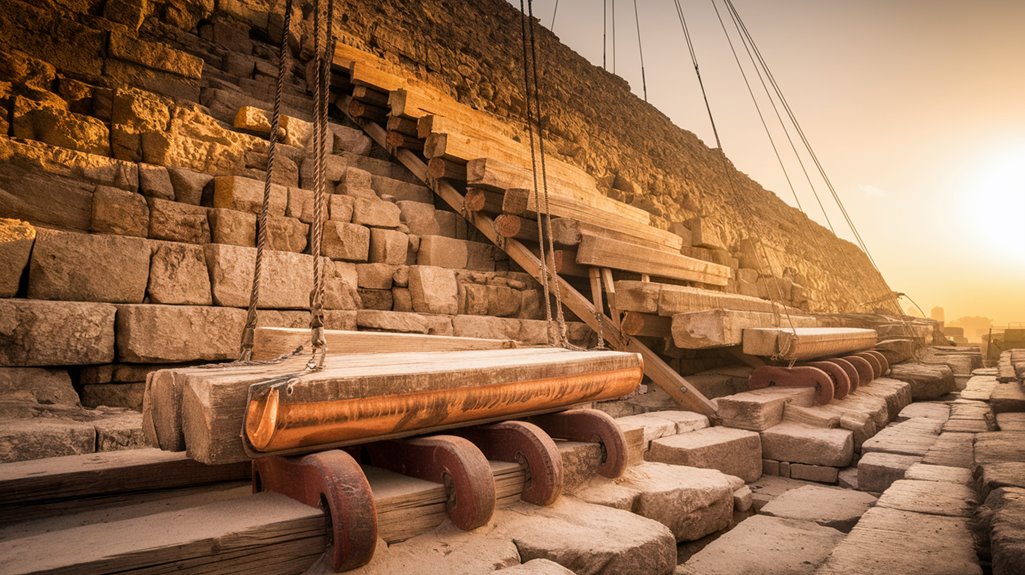
Ancient Egyptians mastered an intricate blend of materials and methods to construct their colossal monuments.
You'll find that their construction materials ranged from locally sourced limestone to imported pink granite from Aswan. The exterior was finished with immaculate white limestone to create a stunning appearance. They've left us fascinating evidence of their ingenuity in transport techniques, using everything from wet sand paths to massive ramps for moving massive stone blocks. The floors of many pyramids incorporated polished alabaster for their sacred spaces.
Here's what made their building methods so remarkable:
- They used copper pickaxes and granite hammers to extract stones from quarries up to 160 feet deep.
- They poured water or oil under stone sleds to reduce friction during transport.
- They employed the royal cubit (52.5 cm) to guarantee perfect square measurements.
- They used plumb lines and North Star observations for precise alignment.
- They applied gypsum mortar as both a lubricant and setting agent.
Unsolved Riddles: Modern Discoveries and Ongoing Research
While modern technology has revolutionized archaeological research, recent discoveries continue to deepen the mystery of Egypt's pyramids.
You'll find that ground-penetrating radar has revealed an L-shaped structure beneath Giza's Western Cemetery, potentially leading to unexplored chambers.
 33 feet in length and lies approximately 6.5 feet below the surface.
33 feet in length and lies approximately 6.5 feet below the surface.
Even more intriguing, researchers have uncovered a lost branch of the Nile that might explain how ancient builders transported massive stones.
Though some attribute mysterious powers to the pyramids or suggest lost civilizations with advanced technologies built them, science focuses on verifiable evidence.
The Orion Correlation Theory and newly discovered chambers within the Great Pyramid raise fascinating questions.
Initial surveys conducted by Japanese-Egyptian research teams have already yielded unexpected findings in areas previously thought to be empty.
But you'll need to wait for further excavations to reveal these secrets.
Until then, the combination of advanced scanning techniques and careful archaeology continues to unravel the pyramids' enduring riddles.

